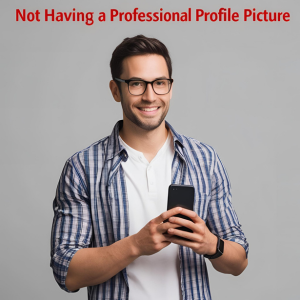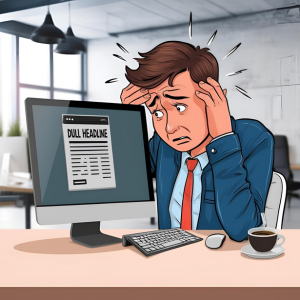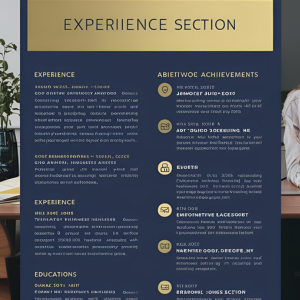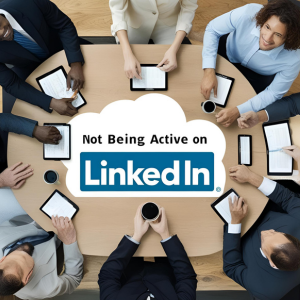LinkedIn is more than just a digital resume – it’s a place where you can showcase your expertise, connect with professionals, and unlock career opportunities. However, many people unknowingly make mistakes that limit their profile’s visibility and reduce their chances of landing great opportunities.
If your LinkedIn profile isn’t getting much attention, you might be making one of these five mistakes. The good news? They’re easy to fix! Let’s dive in.
1) Not Having a Professional Profile Picture

Your profile picture is the first thing people notice when they visit your LinkedIn page. If you’re using a casual selfie or skipping the photo altogether, you might be missing out on valuable connections.
Why This Matters:
A LinkedIn profile with a clear, professional photo gets more views and connection requests compared to those without one. A good picture makes you look approachable and credible.
How to Fix It:
✔ Choose a clear, high-quality headshot taken in good lighting.
✔ Wear professional or industry-appropriate attire.
✔ Avoid filters, group photos, and blurry images.
✔ Keep the background simple and distraction-free.
A great photo builds trust and increases the chances of someone reaching out to you.
2) Writing a Weak or Generic Headline

Your LinkedIn headline isn’t just a job title – it’s your personal brand statement. If your headline simply says “Looking for Opportunities” or “Marketing Professional,” you’re not making a strong impression.
Why This Matters:
Your headline is one of the most visible parts of your profile. It appears in search results, messages, and connection requests. A well-crafted headline helps others understand who you are and what you bring to the table.
How to Fix It:
✔ Instead of “Software Engineer”, write “Full-Stack Developer | Expert in JavaScript & Python | Passionate About Scalable Web Solutions”.
✔ Instead of “Student at XYZ University”, try “Aspiring Data Analyst | Skilled in Excel, SQL & Data Visualization”.
A strong headline grabs attention and helps you get discovered by recruiters and potential connections.
3) Leaving the ‘About’ Section Blank or Too Generic

Your ‘About’ section is your chance to tell your professional story. If you leave it empty or just list random soft skills, you’re missing a chance to stand out.
Why This Matters:
Recruiters and hiring managers look at the ‘About’ section to get a sense of your experience, personality, and expertise.
How to Fix It:
✔ Write a short but engaging summary (3-4 paragraphs) that describes:
- What you do
- Your skills and expertise
- Key achievements
- What you’re passionate about
✔ Use clear, conversational language-avoid complex jargon.
✔ Add metrics or examples to show real impact.
Example:
“As a digital marketing specialist, I help brands grow their online presence. Over the last 3 years, I’ve created data-driven social media strategies that increased engagement by 50% and improved lead generation. I’m passionate about using analytics and creativity to drive brand success.”
Your ‘About’ section is your elevator pitch-make it count!
4) Not Showcasing Your Achievements in the Experience Section

A common mistake is listing only job titles and responsibilities without showing real impact. Simply stating “Managed a sales team” doesn’t tell potential employers what you actually accomplished.
Why This Matters:
Recruiters are looking for results. Numbers and achievements make your experience stand out and prove your expertise.
How to Fix It:
✔ Instead of “Handled customer service”, write “Resolved 100+ customer queries weekly, improving satisfaction scores by 25%”.
✔ Instead of “Managed social media”, try “Developed a content strategy that boosted engagement by 40% in six months”.
Quantifying your work makes it more credible and impactful.
5) Not Being Active on LinkedIn

Many professionals create a LinkedIn profile and then forget about it. But if you’re not engaging with content, commenting, or sharing, your profile won’t appear in searches, and you’ll miss out on valuable networking opportunities.
Why This Matters:
Regular activity boosts your visibility and helps you build meaningful connections.
How to Fix It:
✔ Engage with posts by liking, commenting, and sharing relevant content.
✔ Post insights about your industry, career journey, or professional achievements.
✔ Join LinkedIn groups and participate in discussions.
Even spending 10-15 minutes a few times a week engaging on LinkedIn can help grow your network and boost your visibility.
Final Thoughts
Your LinkedIn profile is your digital business card-it should highlight your strengths and attract the right opportunities. By fixing these five mistakes, you can increase your chances of being noticed by recruiters, potential clients, and industry leaders.
✅ Add a professional profile picture
✅ Optimize your headline with keywords and skills
✅ Write a compelling ‘About’ section that tells your story
✅ Use numbers in your work experience to highlight achievements
✅ Stay active by posting and engaging regularly
Start making these small but powerful changes today and see how your LinkedIn presence improves!
Frequently Asked Questions (FAQs)
1. How often should I update my LinkedIn profile?
It’s a good idea to review and update your profile every 3-6 months. If you’ve gained new skills, completed a project, or changed jobs, update your profile immediately.
2. What should I post on LinkedIn?
You can share:
- Career lessons and personal growth experiences
- Industry insights or trends
- Achievements, promotions, or completed projects
- Tips and advice related to your field
3. How do I get more LinkedIn connections?
✔ Send personalized connection requests – avoid generic “I’d like to connect” messages.
✔ Engage with others by commenting and sharing insights.
✔ Join relevant groups and actively participate.
4. Is LinkedIn Premium worth it?
LinkedIn Premium is helpful if you’re actively job searching or networking, as it allows you to see who viewed your profile and send messages to recruiters. However, you can still build a strong profile without it.
5. Should I include personal interests on my LinkedIn profile?
Yes! Adding interests like volunteering, blogging, or public speaking makes your profile more engaging and gives recruiters a well-rounded view of your personality. Just keep it professional.
Now that you know what mistakes to avoid, take 5-10 minutes today to optimize your LinkedIn profile. Small changes can lead to big career opportunities! 🚀
Have more questions? Drop them in the comments below! 😊

